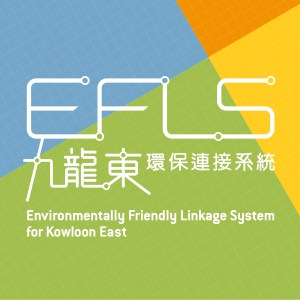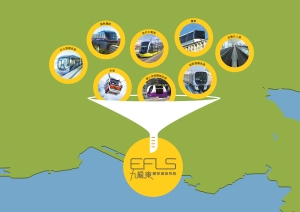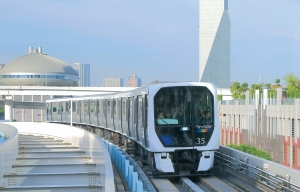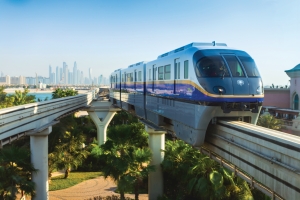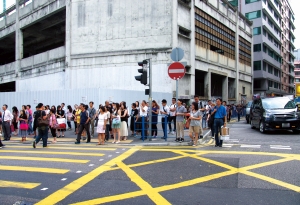Green transport to connect Kowloon East
|
As announced by the Chief Executive in his 2011-12 Policy Address, the Government is determined to develop Kowloon East (KE), covering Kai Tak, Kowloon Bay and Kwun Tong Business Areas, into a new core business district (CBD) with a range of commercial, leisure, recreational and tourism facilities, so as to attract world-class enterprises to move in and support the sustainable development of Hong Kong’s economy. However, to develop a successful CBD and provide KE with quality external and internal linkage services that will enhance connectivity in the area, we need a convenient, fast, safe, reliable and well-planned green transport linkage system with adequate carrying capacity. With this in mind, we have launched another round of public consultation (PC) exercise and hope to listen to your views. Looking back at the Government’s development of an elevated Environmentally Friendly Linkage System (EFLS), the Kai Tak Outline Zoning Plan approved in 2007 initially proposed a rail-based elevated EFLS running within the Kai Tak Development (KTD). Subsequently, in 2012 and early 2014, the Civil Engineering and Development Department (CEDD) officially conducted a two-stage PC exercise for the elevated monorail linkage system proposed under the preliminary feasibility study for the EFLS for Kowloon East. The public generally supported enhancing the connectivity of KE through the proposed EFLS to facilitate the development of KE into another CBD. However, there were diverse views on the elevated monorail system, and some expressed concerns about the alignment and coverage of the EFLS as well as the impact on the Kwun Tong Typhoon Shelter, etc. Detailed planning to prepare for the future In light of various public concerns, the CEDD commenced the two-stage detailed feasibility study (DFS) in October 2015. The first stage addressed the public concern over whether an elevated railway system is needed in Kowloon East, and evaluated various green transport modes to select the one most suitable for KE and the most cost-effective. Once the most suitable transport mode has been confirmed, we will formulate proposals for the EFLS in the next stage, including its detailed alignment, station locations, operation and procurement approaches, costs, financial analyses, etc. As the issues concerned involve different stakeholders and local residents, we will not underestimate the difficulty we face during the negotiation. However, as long as all the parties are striving for a consensus, I am confident that the proposal will eventually be supported by the general public. In fact, the KE CBD will have the potential to supply about 7 million square metres of commercial floor area, and thus increase the working population in the area. Also, as the resident population in the KTD may reach 134 000 and various public facilities will attract people to go there, transport demand will grow. We expect that by 2036, daily commutes in the area will double its current figure. Therefore, it is necessary to prepare for the future and further explore ways to improve the transport network of Kowloon East.
So, what would be the most suitable linkage system for the development of Kowloon East which can also support the sustainable development of Hong Kong’s economy in the long run? Although some expressed support for an at-grade linkage system in the previous consultation, findings of the study show that the existing roads around Kowloon Bay and Kwun Tong are already very crowded. Just imagine that we introduce an at-grade linkage system on the already congested roads, can such a system bring benefits to the community as a whole though with a lower construction cost? If the system operates in the dedicated mode (similar to the existing light rail system in New Territories West), it will occupy at least two traffic lanes and inevitably aggravate the traffic congestion problem in the area. However, if the system runs in shared mode (similar to the existing tram system in the northern shore of Hong Kong Island), it will be constrained by road traffic conditions and will not outperform the existing arrangements provided by public transport (such as buses and minibuses), while additional investment will be required. How can such a system support the sustainable development of Kowloon East? After extended contemplation and deliberation, the CEDD has completed the first stage of the study and confirmed that two elevated transport modes (i.e. the automated people mover (APM) and the monorail) are more suitable for the development of Kowloon East. The operation of these transport modes will only have minimal impact on the road space in the area. Also, they will not be affected by road traffic conditions. The speed and efficiency of these transport modes can effectively shorten passengers’ commute time. Compared with other systems operating at-grade, they can deliver more convenient and reliable services, and bring greater benefits to the community as a whole by facilitating residents’ commutes while supporting the sustainable development of the CBD. On 2 May, the CEDD launched a two-month interim PC exercise for the DFS for the EFLS for KE to collect public views on the two elevated transport modes proposed under the first stage of the study, i.e. the APM and the monorail. Various statutory bodies, professional institutions, transport operators and concern groups will also be consulted. Activity details and consultation documents are available on the EFLS website (www.ktd.gov.hk/efls). We welcome your participation and hope to receive your views by 2 July. Together, let us develop another CBD for Hong Kong that we all will be proud of. |
|
7 May, 2017
Back